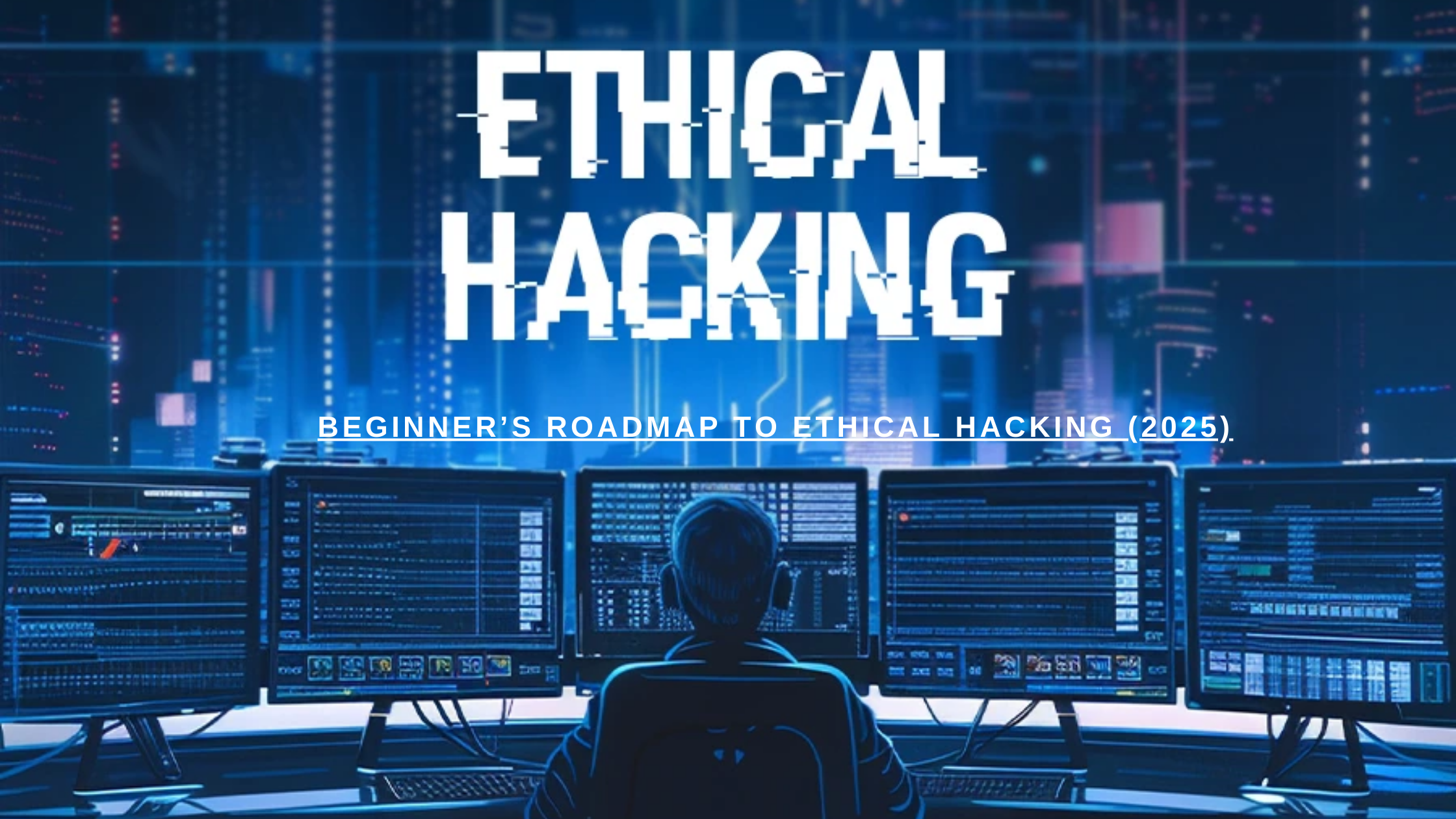In today’s digital age, cybersecurity is no longer a luxury—it’s a necessity. With increasing cyber threats, the demand for ethical hackers is higher than ever. If you’re a complete beginner and want to step into the world of ethical hacking, you’re in the right place. This blog provides a simple, structured, and beginner-friendly roadmap to help you start your journey from scratch.
Phase 1: Build the Foundation (Weeks 1–4)
1. Master Basic Computer Skills
Before diving into hacking, it’s essential to be comfortable with your computer. Understand how operating systems (Windows and Linux) work, manage files and folders, and learn basic troubleshooting.
2. Learn Networking Fundamentals
Networking is the backbone of ethical hacking. Key topics to learn include:
- IP Addressing
- DNS & DHCP
- TCP/IP and UDP
- Common Protocols: HTTP, HTTPS, FTP, SSH
Recommended Resource: Cisco Networking Basics (YouTube/Online Courses)
3. Get Comfortable with Linux
Linux is the preferred OS for hackers, especially Kali Linux. Learn how to:
- Install Kali Linux (Virtual Machine or Dual Boot)
- Use terminal commands
- Navigate the Linux file system
Recommended Book: “Linux Basics for Hackers”
Phase 2: Core Ethical Hacking Skills (Weeks 5–12)
4. Understand Hacker Types and Legal Aspects
Learn the differences between White Hat, Black Hat, and Grey Hat hackers. Familiarize yourself with cyber laws and ethical hacking guidelines.
5. Learn the Five Stages of Ethical Hacking
- Reconnaissance: Gathering information
- Scanning: Network scanning and enumeration
- Gaining Access: Exploiting vulnerabilities
- Maintaining Access: Backdoors and persistence
- Clearing Tracks: Covering your actions
6. Essential Hacking Tools to Learn
- Nmap (Network scanning)
- Wireshark (Packet analysis)
- Burp Suite (Web app testing)
- Metasploit (Exploitation framework)
- Hydra & John The Ripper (Password cracking)
Phase 3: Specialized Skills (Months 3–6)
7. Web Application Hacking
Master the OWASP Top 10 vulnerabilities like SQL Injection, Cross-Site Scripting (XSS), and Cross-Site Request Forgery (CSRF). Start practicing Bug Bounties.
8. Wi-Fi Hacking Basics
Learn how wireless networks can be compromised. Tools like Aircrack-ng are useful for WPA/WPA2 attacks.
9. Social Engineering Techniques
Understand how human behavior can be exploited. Techniques include phishing, baiting, and pretexting.
10. Learn Scripting
Python is widely used for automating hacking tasks. Also, learn Bash scripting to automate command-line tasks.
Phase 4: Practice and Real-World Experience
11. Participate in CTF Challenges
CTFs (Capture the Flag) help sharpen your skills. Platforms like TryHackMe, Hack The Box, and PicoCTF are great for practice.
12. Consider Certifications
While not mandatory, certifications can boost your credibility:
- CEH (Certified Ethical Hacker)
- CompTIA Security+
- OSCP (for advanced learners)
Final Tips for Success
- Dedicate 1–2 hours daily for consistent learning.
- Take notes and build your own knowledge base.
- Never hack without permission. Stay ethical and legal.
Conclusion Ethical hacking is an exciting and rewarding field. With dedication, practice, and the right roadmap, anyone can become a skilled ethical hacker. Begin your journey today and contribute to a safer digital world.
Want to Stay Updated?
Subscribe to our newsletter and follow us on social media for more beginner guides, tips, and tutorials in cybersecurity and ethical hacking.
#EthicalHacking #Cybersecurity #LearnHacking #BeginnersGuide #HackingRoadmap
